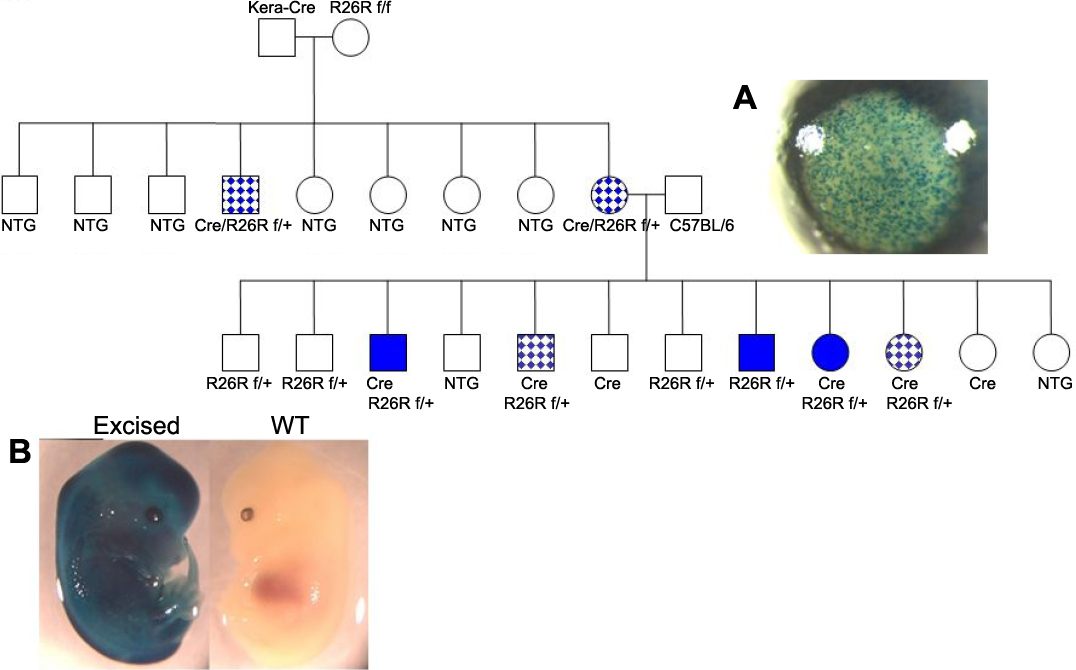Figure 3. Pedigree analysis of the Kera-Cre transgenic mice mated with Rosa26R homozygous (R26R) mice. Squares stood for males, and circles stood for female animals; mosaic circles and squares indicate female and male
animals, respectively, with a tissue specific manner of expressing Cre in the corneal stroma. The solid squares and circles indicate male and female animals, respectively, with expressing whole
body blue by X-gal staining. Genotypes of experimental mice were determined by PCR of tail DNA as indicated under each of
individual mice. Cre or R26R f/w indicates single heterozygous transgenic mice harboring the Cre or Rosa26R gene alone; Cre/Rsa26Rf/w indicates double transgenic mice harboring both Cre and heterozygous Rosa26R alleles and a wild type (w) Rosa allele. Non-transgenic animals were indicated with open squares or circles. (A) Detection of Cre-mediated recombination in the corneal stroma from double transgenic Kera-Cre/Rosa26Rf/w mice is shown. Whole-mount X-gal staining was performed on the eye and hind limb from a two-month-old double transgenic Kera-Cre/Rosa26Rf/w mouse. (B) X-gal staining in E14.5 wild type (WT) embryo and transgenic embryos with excision of the reporter gene is shown. Embryos
were collected at E14.5 from C57BL/6 female mated with male double transgenic Kera-Cre/R26R mouse. The β-gal activity was detected by whole-mount X-gal staining.

 Figure 3 of
Weng, Mol Vis 2008; 14:562-571.
Figure 3 of
Weng, Mol Vis 2008; 14:562-571.  Figure 3 of
Weng, Mol Vis 2008; 14:562-571.
Figure 3 of
Weng, Mol Vis 2008; 14:562-571. 